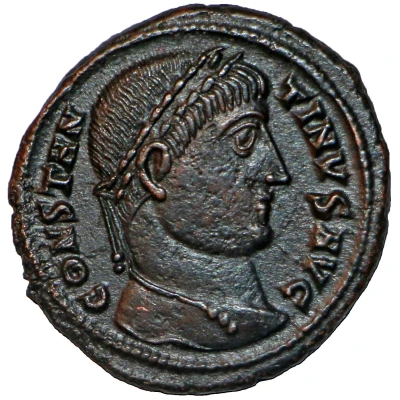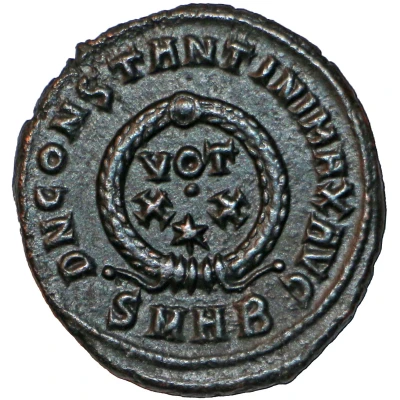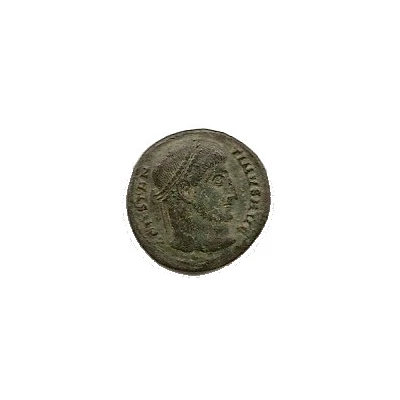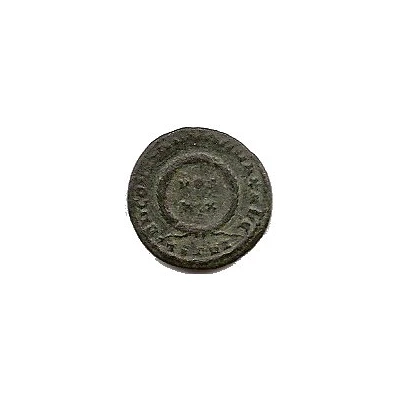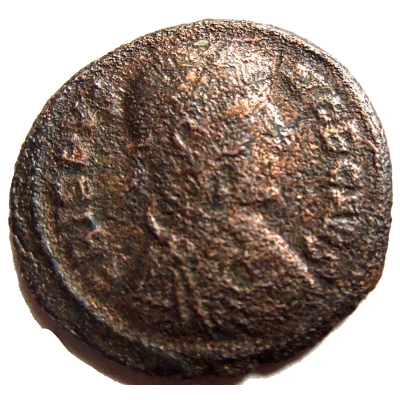
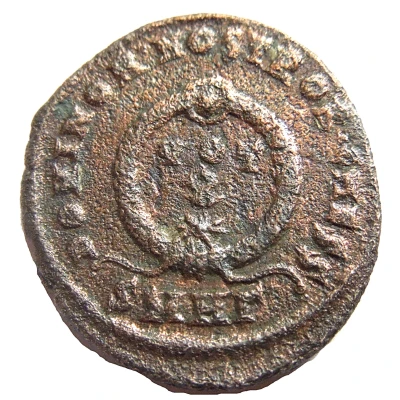

© rugby_beach
Nummus - Crispus DOMINOR NOSTROR CAESS; Heraclea
324 year| Bronze | 3.10 g | 19 mm |
| Issuer | Rome › Roman Empire (27 BC - 395 AD) |
|---|---|
| Emperor | Constantine I (Flavius Valerius Constantinus) (306-337) |
| Type | Standard circulation coin |
| Year | 324 |
| Value | Nummus (1⁄7200) |
| Currency | Solidus, Reform of Constantine (AD 310/324 – 395) |
| Composition | Bronze |
| Weight | 3.10 g |
| Diameter | 19 mm |
| Shape | Round (irregular) |
| Technique | Hammered |
| Demonetized | Yes |
| Updated | 2024-10-05 |
| Numista | N#70587 |
|---|---|
| Rarity index | 88% |
Reverse
Legend in two lines in a wreath
Script: Latin
Lettering:
DOMINOR. NOSTROR. CAESS
VOT
X
*
Translation: “Dominorum Nostrorum Cæsarum / Votis decennalibus”
Edge
Plain
Comment
The manufacture of this type begins after the fall of Licinii in 324 and before the elevation of Constantius II like Caesar in November 324. For Crispus, the principal office is the third while Constantine II uses the fourth.Interesting fact
The Nummus - Crispus coin was issued during the reign of Emperor Constantine the Great, who ruled the Roman Empire from 306 to 337 AD. This coin was part of a large-scale currency reform that Constantine implemented to stabilize the Roman economy, which had been suffering from inflation and currency devaluation. The Nummus - Crispus coin was designed to be a more reliable and stable currency than previous coins, and it featured a new image of the emperor on the obverse side, which was meant to symbolize the power and authority of the Roman Empire.
